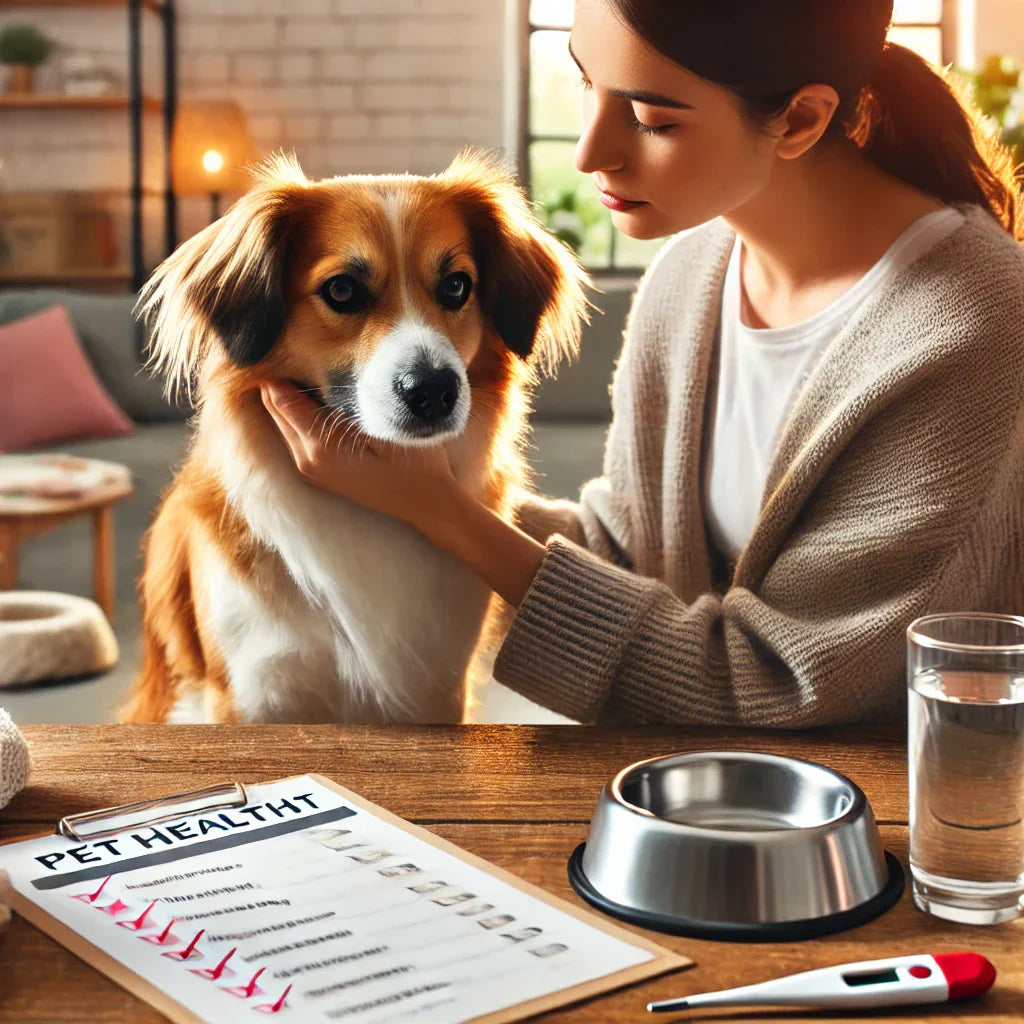
How to Spot Early Signs of Illness and Save Your Pet
Share

Introduction: Why Early Detection of Pet Illness is Critical
Your pet’s health can change rapidly, and recognizing early signs of pet illness can be the key to preventing serious medical conditions. Pets often hide their pain, so subtle shifts in behavior, appetite, or energy levels might be the only signs of an underlying issue.
This guide will teach you how to:
✅ Identify pet health symptoms before they escalate
✅ Monitor behavioral changes that indicate illness
✅ Use home monitoring techniques for early detection
✅ Know when to seek veterinary care for your pet
🐾 Understand distress signals to act promptly when your pet needs help and take control of your pet’s well-being.
1. Behavioral Changes That May Indicate Illness
📌 Pet Behavioral Changes Indicating Illness
🚨 Watch for These Subtle Behavioral Changes:
✔ Increased hiding or aggression – Could indicate pain or discomfort.
✔ Sudden lethargy or lack of interest in play – Often linked to infections or chronic conditions.
✔ Excessive vocalization – Could be a sign of stress, anxiety, or pain.
✔ Changes in sleeping patterns – Disrupted sleep may suggest discomfort or illness.
🐾 Try natural remedies for minor ailments before consulting a vet—some mild issues can be managed at home with proper care.
2. Physical Symptoms of Pet Health Issues
📌 Common Signs of Illness in Dogs and Cats
✔ Unexplained weight loss or gain – Could signal thyroid, diabetes, or digestive issues.
✔ Coughing, sneezing, or labored breathing – May indicate infections, allergies, or heart disease.
✔ Changes in appetite or thirst – Increased thirst could mean diabetes; loss of appetite may signal infections or organ issues.
✔ Vomiting or diarrhoea – Frequent occurrences require veterinary attention.
✔ Eye or nose discharge – Persistent discharge could indicate infection or allergies.
✔ Limping or difficulty moving – This may be due to arthritis, injury, or neurological conditions.
🐾 Pay extra attention to senior pets, who are more prone to health issues—ageing pets need more frequent monitoring.
3. Home Monitoring for Early Detection
📌 Monitoring Pet Health for Early Warning Signs
🏠 Steps for Home Monitoring:
✔ Track eating, drinking, and bathroom habits.
✔ Check your pet’s body for lumps, wounds, or sensitivity.
✔ Use pet-friendly thermometers to check for fever.
✔ Observe behavior for sudden shifts in energy or mood.
📌 Pet Health Checklists for Owners
📝 Checklist for Weekly Pet Health Monitoring:
🔹 Appetite and hydration levels
🔹 Body condition (weight, skin, and fur quality)
🔹 Mobility and coordination
🔹 Energy levels and behavior
🔹 Bathroom habits
🐾 Prevent illnesses with these critical vaccines—vaccinations play a major role in long-term pet health.
4. Recognizing Signs of Pain in Pets
📌 How to Identify Early Symptoms of Pet Disease & Discomfort
🚨 Common Signs of Pain in Pets:
✔ Whimpering, growling, or hissing when touched
✔ Licking or chewing at one spot excessively
✔ Avoiding stairs or jumping (for cats and dogs)
✔ Shallow breathing or excessive panting
🐾 Support your pet’s immune system with proper nutrition—a healthy diet reduces inflammation and supports recovery.
5. When to Seek Veterinary Care for Your Pet
📌 How Often Should I Check My Pet for Signs of Illness?
✔ Daily: Observe appetite, energy, and bathroom habits.
✔ Weekly: Check for weight loss, coat quality, and unusual lumps.
✔ Monthly: Conduct a full pet health checklist review and assess behavioral patterns.
📌 Early Detection of Pet Medical Conditions
🚨 Seek Immediate Veterinary Attention If Your Pet Has:
✔ Sudden collapse or unresponsiveness
✔ Seizures or disorientation
✔ Extreme vomiting or diarrhea (over 24 hours)
✔ Difficulty breathing or persistent coughing
✔ Unexplained bleeding or wounds that won’t heal
🐾 Understand distress signals to act promptly when your pet needs help—never wait too long to contact your vet.
